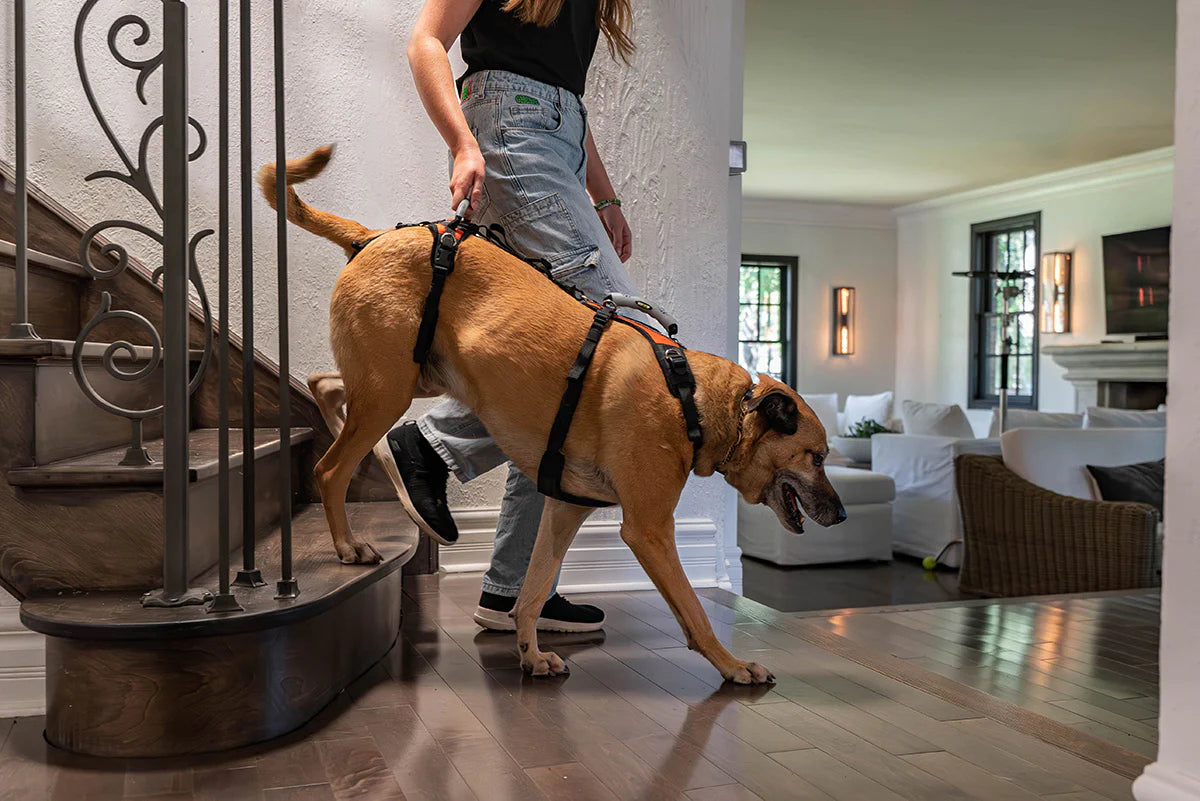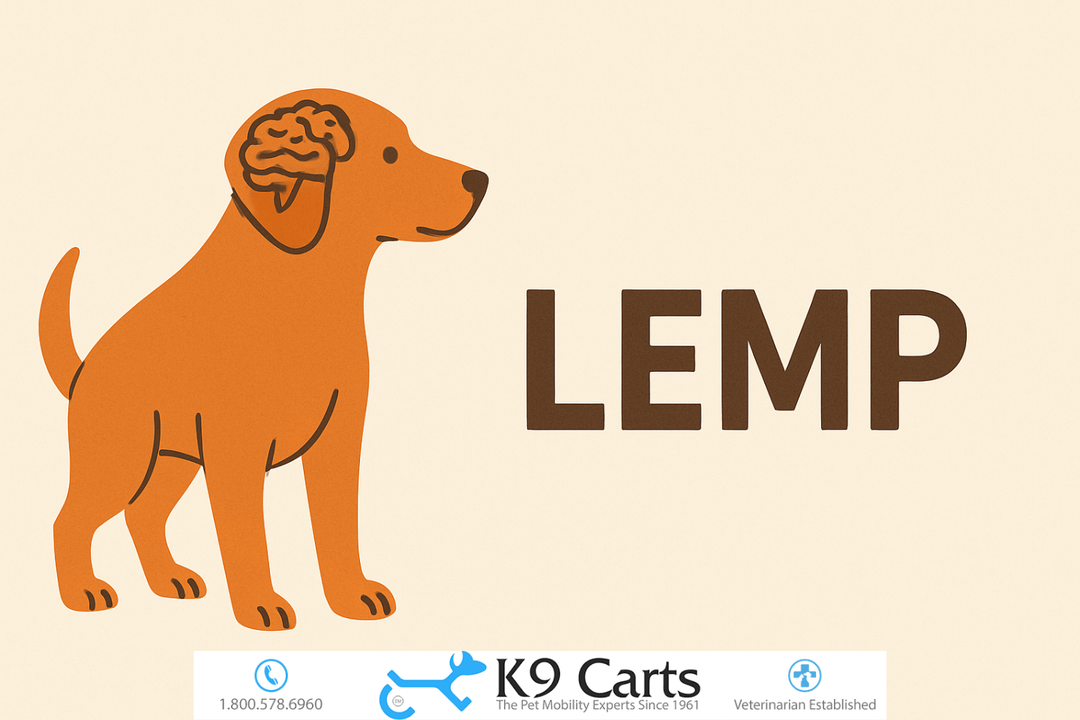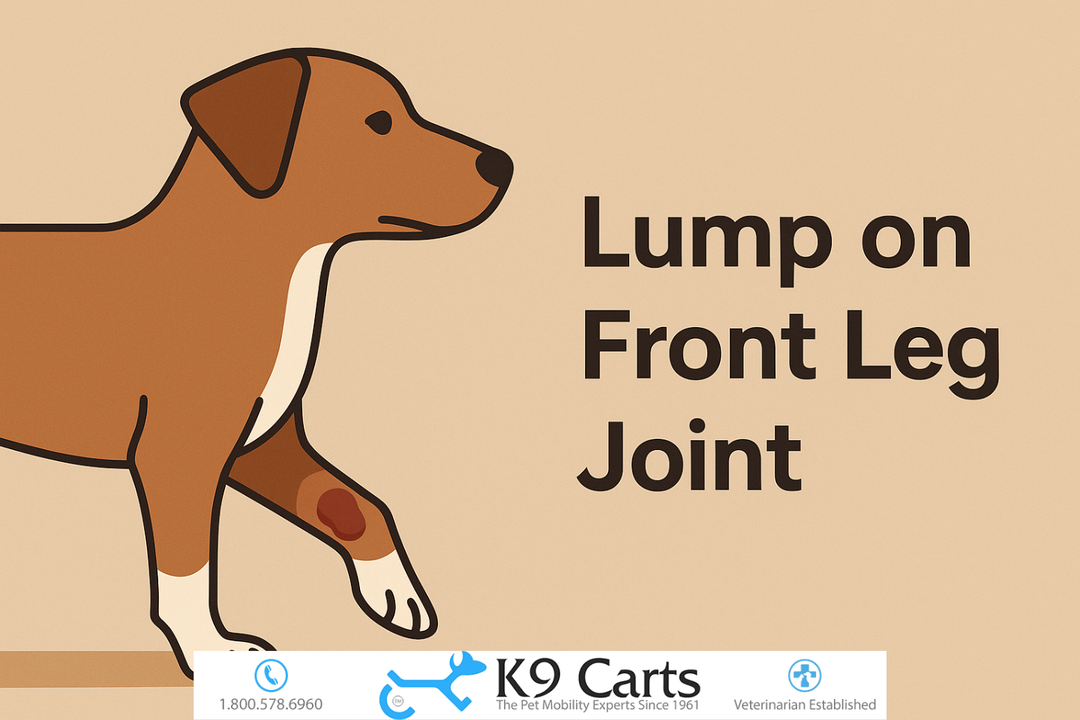Spondylosis in Dogs: Definition, Causes, and Treatment Options

Among the myriad conditions that can affect our beloved canine companions, spondylosis stands out as a particularly prevalent and concerning one, especially in senior dogs. It's a term that, while not immediately familiar to many, represents a crucial facet of canine health, impacting the dog's spine, comfort, and overall quality of life.
As a dog owner, understanding spondylosis, its root causes, and viable treatment options is indispensable in ensuring our pets lead fulfilling lives, even as they age or encounter mobility challenges. Let's delve deep into this subject, broadening our understanding and arming ourselves with knowledge to better support our furry friends.
What is Spondylosis in Dogs?
Spondylosis, often referred to as spondylosis deformans, describes a condition in dogs where bony spurs, also known as osteophytes, develop along the edges of the vertebrae in the spine. It's a degenerative condition, meaning it tends to worsen over time.
These bony growths can be likened to the body's attempt to stabilize or repair itself in response to changes in the spine, whether from aging, injury, or other factors. While these bony formations might sound alarming, it's worth noting that many dogs with spondylosis do not exhibit pain or discomfort associated with the condition.
However, in certain instances, these osteophytes can restrict the movement of the spine or impinge upon the spinal nerves, leading to pain and other symptoms.
Furthermore, spondylosis in dogs isn't an exclusive condition. In fact, many dogs, especially as they reach their senior years, may have some degree of spondylosis without it leading to noticeable clinical symptoms. However, when symptoms do manifest, it's essential for us to be informed and proactive, ensuring our pets get the necessary care and support.
Causes of Spondylosis in Dogs
The onset of spondylosis in dogs can be attributed to a myriad of factors, some inherent while others are influenced by external conditions. By gaining a deeper understanding of these causes, we equip ourselves with the ability to take preventive measures and make informed decisions regarding our dog's health.1. Aging
Aging stands as the most prevalent reason for the development of spondylosis in dogs. Just as humans encounter a myriad of health challenges as they age, dogs are not exempt from this natural process.
With time, the discs that cushion the vertebrae in the spine may begin to deteriorate. This deterioration prompts the body to form bony spurs as a compensatory response to provide stability. While younger dogs can develop spondylosis, it's more commonly found in middle-aged to senior dogs, reinforcing the association between the condition and aging.
2. Injury
Trauma or injury to the spine can expedite the formation of osteophytes. When a dog experiences an injury, the body's natural reaction is to repair and stabilize the affected area. In some cases, this results in the accelerated growth of bony spurs, especially if the injury causes instability in the spine. Thus, it's paramount to ensure our dogs are safeguarded from situations that might result in significant injuries.3. Genetic Predisposition
Certain breeds or individual dogs might have a higher genetic predisposition to developing spondylosis. Large breed dogs, for example, often bear more weight on their spines, making them more susceptible to spinal conditions. Moreover, if a dog's parents or siblings had spondylosis, the chances of them developing the condition might be higher, underlining the role of genetics.4. Lifestyle Factors
The lifestyle and activity level of a dog can influence the likelihood of developing spondylosis. Dogs that lead sedentary lives, without ample opportunity for physical activity, can become more prone to a range of health conditions, including spondylosis.
Conversely, highly active dogs that regularly engage in rigorous activities or repetitive motions might also be at risk, as consistent strain on the spine can be a contributing factor. We must strike a balance, ensuring our dogs get adequate exercise without overexertion.
Recognizing the Symptoms of Canine Spondylosis
Early detection can make a significant difference in the management and treatment of any health condition, and spondylosis in dogs is no exception. To offer our dogs the best care possible, we must remain vigilant, attuned to both subtle and pronounced changes in their physical health and behavior.Physical Signs
- Bony Protrusions: One of the most direct signs of spondylosis is the presence of bony growths along the dog's spine. While these might not always be visible or palpable, in certain cases, a careful touch along the spine may reveal these bony formations.
- Stiffness: Dogs with spondylosis often experience stiffness, particularly after waking up or lying down for extended periods. They might seem less agile or have difficulty turning their bodies.
- Difficulty in Mobility: As the bony spurs grow, they can hinder the dog's range of motion. Dogs might struggle with actions that were previously easy for them, such as jumping onto a couch or climbing stairs.
Behavioral Changes
- Reluctance to Play or Move: A dog that was once playful and active might seem less interested in toys, games, or walks. This change often stems from the discomfort or pain they experience due to spondylosis.
- Change in Posture: Dogs with spinal issues might adopt a hunched posture or lower their head more frequently than usual. This altered stance can be their way of mitigating pain or discomfort.
- Evident Pain: While dogs are known for their stoic nature, persistent pain might lead to visible signs of distress. They might whimper, become more irritable, or shy away from being touched, especially around the affected area.
Advanced Symptoms
- Loss of Limb Function: In severe cases of spondylosis where nerve compression occurs, dogs might experience a partial or complete loss of function in their limbs.
- Incontinence: Another serious symptom to watch out for is incontinence. Dogs might struggle to control their bladder or bowel movements due to nerve impingement.
- Muscle Atrophy: Over time, a lack of use or reduced mobility can result in the wasting away of muscles, especially in the affected areas.
Diagnosis and Evaluation
The road to understanding and effectively managing spondylosis in our canine companions begins with a comprehensive diagnosis and assessment. Accurate diagnosis not only provides clarity on the condition's progression but also steers the direction of subsequent treatments.Veterinary Assessment
Regular veterinary check-ups remain paramount. Early detection can be the difference between mild interventions and extensive treatments. During these check-ups, the veterinarian will conduct a thorough physical examination, feeling along the spine for any abnormal growths or areas of tenderness.
They'll also observe the dog's movements, posture, and responses to certain stimuli. These routine evaluations can often catch the early stages of spondylosis or other conditions, making them invaluable.
Imaging
Modern medicine provides veterinarians with a range of imaging techniques to visualize the internal structures of our pets. For a condition like spondylosis, X-rays are the most commonly used method. These images reveal the bone spurs and bridges forming along the spine. However, in certain cases, MRIs and CT scans can offer a more detailed view, especially if there's suspicion of soft tissue involvement or other complications.Gait Analysis
Changes in our dog's walk, or gait, can sometimes be the earliest indicators of spondylosis. Through gait analysis, veterinarians observe and record these changes. It provides a structured evaluation of the dog's walk, turning, and other movements. The information from a gait analysis not only aids in the diagnosis but can also be invaluable for solutions tailored to individual needs, such as mobility aids.
Speaking of which, for dogs experiencing pronounced mobility challenges due to spondylosis, tools like the custom-built wheelchairs from K9 Carts can become an essential part of their daily life.
This phase of assessment and diagnosis lays the foundation for subsequent treatments. With clarity on the condition's extent and progression, interventions can be precisely targeted, ensuring our dogs receive the most effective care.
Treatment Options for Spondylosis in Dogs
Addressing spondylosis in dogs requires a multifaceted approach. As the condition progresses and the spine undergoes changes, it becomes crucial to have an arsenal of treatments to ensure our beloved pets remain comfortable and active. Let's delve into some effective treatments available today.1. Pain Relief
Alleviating pain stands at the forefront of managing spondylosis. Veterinarians typically recommend:- NSAIDs (Non-Steroidal Anti-Inflammatory Drugs): These medications combat inflammation and provide relief from pain. Always ensure you're using pet-specific NSAIDs, as some human NSAIDs can be toxic to dogs.
- Corticosteroids: These are potent anti-inflammatory agents. They can be highly effective, but they come with potential side effects, so it's essential to follow the veterinarian's prescribed dosage and guidance closely.
- Other Medications: Depending on the dog's specific needs and any accompanying conditions, a vet might prescribe muscle relaxants or other pain relief medications.
2. Supplements
Supplements can play a role in supporting joint health and possibly slowing the progression of spondylosis:- Glucosamine and Chondroitin: These compounds are natural components of cartilage. Supplementing with them may help in maintaining cartilage health and offering some pain relief.
- Omega Fatty Acids: These are known for their anti-inflammatory properties. They can be sourced from fish oil or flaxseed oil supplements and may aid in reducing inflammation associated with spondylosis.
3. Physical Therapy
Engaging in structured physical therapy can help maintain mobility, strength, and flexibility. Techniques may include massages, stretches, and targeted exercises. Regularly performing these under the guidance of a certified canine physical therapist ensures that the dog moves correctly without causing further damage.4. Surgical Interventions
While spondylosis is generally managed through non-surgical means, in severe cases where there's significant pain or nerve compression, surgical intervention might be considered. Such procedures typically involve removing the bony growths or stabilizing sections of the spine.5. Mobility Aids / Canine Wheelchairs
As the condition advances, some dogs may face challenges in their day-to-day mobility. Here's where canine wheelchairs come into play.Introduction to Dog Wheelchairs
For those unfamiliar, canine wheelchairs are designed to support dogs with mobility issues, ensuring they continue enjoying an active life. Spondylosis might limit a dog's ability to run or walk without pain, but with the right mobility aid, that zest for life can be reignited.Features of K9 Carts Rear Wheelchair
We've witnessed the transformative effect of the K9 Carts Rear Wheelchair. Crafted with precision, each wheelchair is tailored to fit a dog's unique measurements, ensuring optimal support and comfort. Durability is at the heart of its design, meaning it can weather daily activities with ease.
Most notably, the therapeutic design considers the health and well-being of our pets, making it more than just a mobility tool; it's a bridge to a more active, happier life for dogs with spondylosis.
As we navigate the challenges of spondylosis, it's heartening to know that numerous treatments and aids are available to support our pets. From medications and supplements to the transformative power of a custom canine wheelchair, we're equipped to offer our dogs a life of comfort, mobility, and joy.








